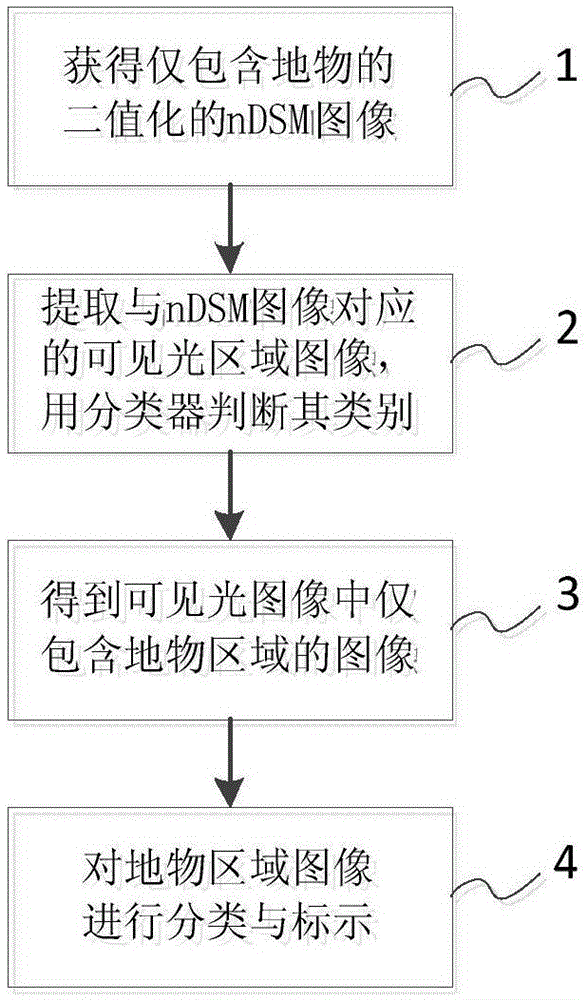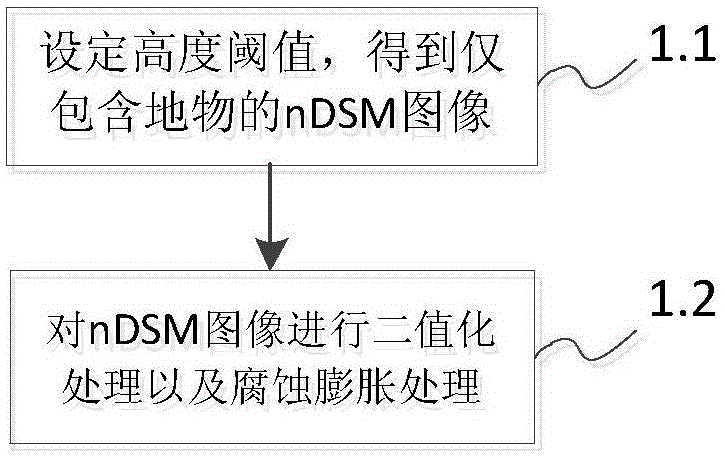Sparse surface feature classification and labeling method based on visible light and laser radar images
A technology for classification of lidar images and ground objects, applied in the field of spatial information, can solve problems such as difficult extraction of target areas, low accuracy, and time-consuming, so as to improve classification speed and labeling accuracy, ensure accuracy, and reduce The effect of classification time
- Summary
- Abstract
- Description
- Claims
- Application Information
AI Technical Summary
Problems solved by technology
Method used
Image
Examples
Embodiment Construction
[0029] Such as figure 1 As shown, a sparse object classification and labeling method based on visible light and lidar images includes the following four steps:
[0030] Step 1: Obtain a binary nDSM (NormalizedDigitalSurfaceModel) image containing only ground objects;
[0031] Step 2: extract the image regions corresponding to the nDSM images in step 1 from the visible light image, and use a classifier to judge the categories of these image regions;
[0032] Step 3: Obtain an image that only contains the object area in the visible light image;
[0033] Step 4: Use the information obtained in the above steps to classify and label the image of the ground object area.
[0034] Such as figure 2 As shown, described step 1: obtain only the binarized nDSM image that comprises ground object, and its feature comprises the following steps:
[0035] Step 1.1: Set the height threshold, further filter out ground points or noise points in the nDSM image, and obtain an nDSM image contain...
PUM
 Login to View More
Login to View More Abstract
Description
Claims
Application Information
 Login to View More
Login to View More - R&D
- Intellectual Property
- Life Sciences
- Materials
- Tech Scout
- Unparalleled Data Quality
- Higher Quality Content
- 60% Fewer Hallucinations
Browse by: Latest US Patents, China's latest patents, Technical Efficacy Thesaurus, Application Domain, Technology Topic, Popular Technical Reports.
© 2025 PatSnap. All rights reserved.Legal|Privacy policy|Modern Slavery Act Transparency Statement|Sitemap|About US| Contact US: help@patsnap.com



